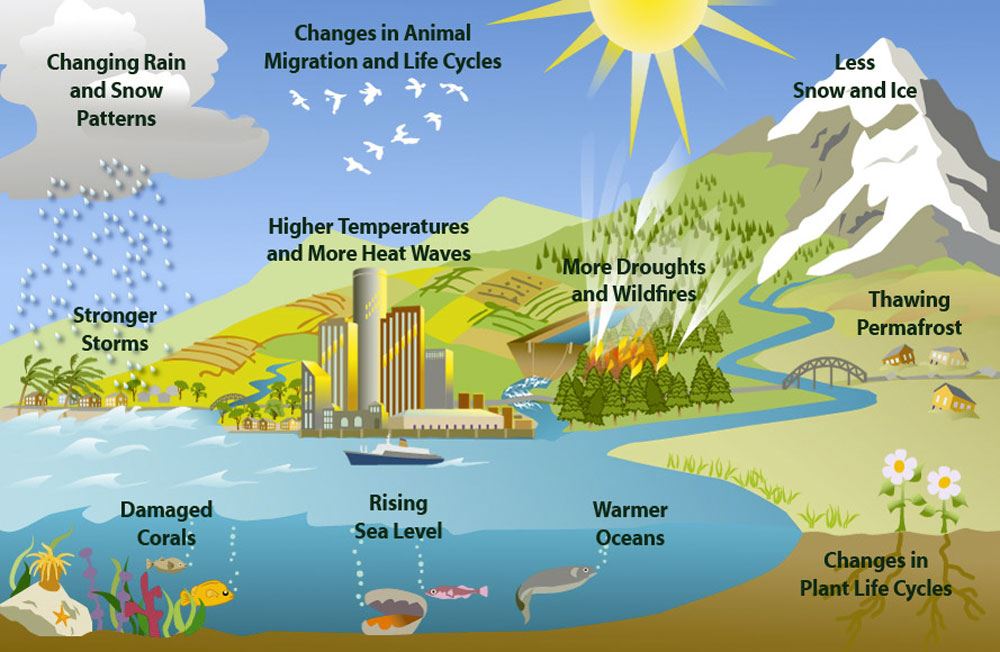
Conversion of Natural Resources refers to the process of transforming raw materials or natural resources found in nature into usable products for human consumption, industry, and various other purposes. Natural resources are materials provided by the Earth, such as water, air, minerals, forests, and fossil fuels, which humans modify to meet their needs.
Types of Natural Resources:
- Renewable Resources: These are resources that can be replenished naturally within a short period of time, such as solar energy, wind energy, water, forests, and biomass.
- Non-renewable Resources: These resources are finite and take a long time (millions of years) to form. Examples include fossil fuels (coal, oil, natural gas) and minerals (gold, iron, copper).
Conversion Processes of Different Natural Resources:
- Water:
- Use: Water is converted for drinking, irrigation, and industrial use.
- Process:
- Desalination: The process of removing salt from seawater to make it drinkable.
- Purification: Water treatment plants clean water by removing contaminants using filtration, chemicals, and ultraviolet light.
- Solar Energy:
- Use: Solar energy is harnessed for electricity generation, heating, and various applications.
- Process:
- Photovoltaic Cells: Solar panels convert sunlight directly into electricity.
- Solar Thermal Systems: Solar energy is used to heat water or air, which can then be used for heating purposes or power generation.
- Wind Energy:
- Use: Wind energy is used for electricity generation and mechanical work.
- Process:
- Wind Turbines: Wind energy is captured by wind turbines, where the kinetic energy of the wind is converted into mechanical energy, and then to electricity.
- Fossil Fuels (Coal, Oil, Natural Gas):
- Use: These are primarily used for energy generation, transportation, and manufacturing.
- Process:
- Combustion: Fossil fuels are burned to produce heat, which can be used to generate electricity or power engines.
- Refining: Crude oil is refined into various products like gasoline, diesel, and other chemicals through processes such as distillation.
- Forests (Timber and Other Forest Products):
- Use: Forests provide timber for construction, paper production, and other wood-based products.
- Process:
- Harvesting: Trees are cut down (sustainably or unsustainably) for timber, paper, and other forest-based materials.
- Pulping: Wood fibers are converted into pulp to produce paper products.
- Minerals (Iron, Copper, Gold, etc.):
- Use: Minerals are used in construction, electronics, jewelry, and various industrial products.
- Process:
- Mining: Minerals are extracted through processes such as open-pit mining or underground mining.
- Smelting: Ore is heated at high temperatures to extract the metal. For example, iron ore is smelted to produce iron and steel.
- Refining: Minerals are purified and processed into usable forms, such as gold bars or copper wires.
- Biomass (Wood, Crop Residues, Animal Waste):
- Use: Biomass is used for fuel, electricity generation, and as raw materials for chemicals.
- Process:
- Burning: Biomass is burned directly for heating or electricity production.
- Fermentation: Organic materials are fermented to produce biofuels like ethanol or biogas.
- Gasification: Biomass is heated in a low-oxygen environment to produce syngas, which can be used for electricity generation.
Environmental Considerations:
The conversion of natural resources often involves human intervention, which can lead to various environmental issues:
- Depletion of Non-renewable Resources: Over-extraction of fossil fuels and minerals can lead to the depletion of these resources.
- Deforestation: Excessive logging can cause habitat loss, disrupt ecosystems, and contribute to climate change.
- Pollution: Extraction and processing of natural resources can lead to air, water, and soil pollution.
- Climate Change: The burning of fossil fuels releases greenhouse gases like carbon dioxide, contributing to global warming.
Sustainable Practices for Resource Conversion:
To mitigate the environmental impact, sustainable practices are increasingly being adopted in the conversion of natural resources:
- Renewable Energy: Investing in clean energy sources like wind, solar, and hydropower.
- Recycling: Reducing the need for raw materials by recycling metals, plastics, and paper.
- Sustainable Forestry: Managing forests in a way that ensures they continue to provide resources without degrading the environment.
- Energy Efficiency: Using resources more efficiently to minimize waste and reduce environmental impact.
Summary:
The conversion of natural resources involves transforming raw materials from nature into usable products, essential for daily human activities. However, it’s crucial to manage this conversion sustainably to minimize environmental damage and ensure that resources remain available for future generations.

Leave a Reply